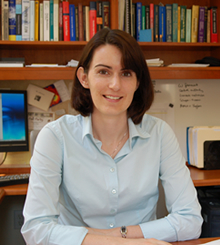Propulsion
Projects
Development of a Self-contained Underwater Velocimetry Apparatus
Team members: Matthias Kinzel
In situ field measurements of animal-fluid interactions present a challenge for conventional velocimetry techniques. Field measurement systems must not only be self-sufficient in regard to power supply and data acquisition but also robust and easy to handle. Building upon previous work, this project is developing a SCUBA diver-operated digital particle image velocimetry (DPIV) system that enables field measurements of the flow around marine organisms in daytime. This new capability will avoid the current constraints that limit measurements to night dives. In addition, we are pursuing development of three-component and, ultimately, volumetric velocimetry capabilities.
Effect of Organism-scale Turbulence on Predator-prey Interactions
Team members: Kelly Sutherland
Interactions between predators and prey in the ocean frequently occur in turbulent fluid motion. In order to examine the impact of local environmental flows on filtration rates of the invasive ctenophore, Mnemiopsis leidyii, we use a laboratory turbulence apparatus that generates fluid motion, without damaging fragile organisms, via a system of submerged speakers. Digital particle image velocimetry (DPIV) and Lagrangian coherent structures (LCS) are used for visualization of fluid structures at the scale of the organism. Measurements of the fluid flux toward the ctenophore feeding structures in the presence of background turbulence is compared to clearance rates in still-water conditions to infer the impact of turbulence on suspension feeding.
Fluid Transport in Muscular Pumps at Intermediate Reynolds Numbers
Team members: Janna Nawroth
Biologically inspired hydrodynamic propulsion and maneuvering strategies promise the advancement of medical implants and minimally invasive clinical tools. We have chosen juvenile jellyfish (ephyrae) as a model system for investigating fluid dynamics and morphological properties underlying fluid transport by a muscular pump at intermediate Reynolds numbers. Complementing studies in live model organisms, we are also engaged in engineering an artificial jellyfish to test design strategies not found in extant jellyfish species.
Influence of Flexibility and Corner Shape on Three-dimensional Wake Vortex Structures
Team members: Daegyoum Kim, Mory Gharib
In order to understand the complicated vortex formation process of the flexible propulsors in nature, three-dimensional vortex structures generated by impulsively translating low aspect-ratio plates with a 90 degree angle of attack are studied experimentally. A three-dimensional, three-component digital particle image velocimetry system developed at Caltech is used to quantify the time-dependent wake structure. Rigid and flexible thin plastic plates are used to find the effect of plate flexibility on the development of vortex structure. In addition, the dynamics of the vortex near a corner region are compared among three different corner angles for impulsively translating plates.
Marine Ostracod Swimming Behavior in the Benthic Boundary Layer Under Different Field Flow Conditions
Team members: Kelly Sutherland
Marine organisms swimming in water near the substratum are subjected to boundary layer flow, which is characterized by steep velocity gradients and turbulence. How do small swimming organisms navigate flows at this interface to forage and interact with mates? In this project, we record in the field the swimming behavior of marine ostracods near complex living substrata exposed to different ambient water flow conditions. Ostracod trajectories and background water flow are recorded simultaneously using a self-contained underwater velocimetry apparatus (SCUVA). Particle image velocimetry enables us to map the instantaneous water velocity fields in which the ostracods are swimming and to infer correlations between swimming dynamics and ambient flow conditions.
Passively Pulsed Propulsion of Aquatic Vehicles
Team members: Robert Whittlesey
Recent work has shown that pulsed-jet propulsion for aquatic vehicles, similar to that used by sea jellies, salps, and squid, can reduce vehicle energy consumption by up to 30%. These results were obtained despite mechanical inefficiencies in the system used to generate the pulsed flow. This project explores an approach to generate the pulsed flow using a passive means of flow excitation, in order to further enhance the energy savings. The new mechanism uses collapsible tubing in a pressurized chamber to generate oscillatory, unsteady flow through the outlet. Empirical characterization is complemented by low-order models to determine effective application to underwater vehicles.
Theoretical Analyses of Animal Wake Vortex Stability
Team members: Clara O'Farrell
Jetting swimmers, such as squid or jellyfish, propel themselves by forming axisymmetric vortex rings. In order to evaluate the performance of these swimmers, it is necessary to assess the optimality of the vortex wakes they produce, which requires an understanding of their stability. In this project, we consider the Norbury family of vortices as a model for the vortex rings produced by jetting swimmers. Previous research has studied the stability of Hill's spherical vortex under axisymmetric prolate and oblate shape perturbations. However, the stability of other members of the Norbury family to axisymmetric perturbations of the type that might occur during the vortex formation process in jetting swimmers is unknown. In order to assess the stability of different members of the family, we introduce physically pertinent shape perturbations and simulate their development using a contour dynamics approach.

Professor McKeon's research interests include interdisciplinary approaches to the manipulation and control of boundary layer flows using morphing surfaces, and fundamental investigations of wall turbulence at high Reynolds number.
